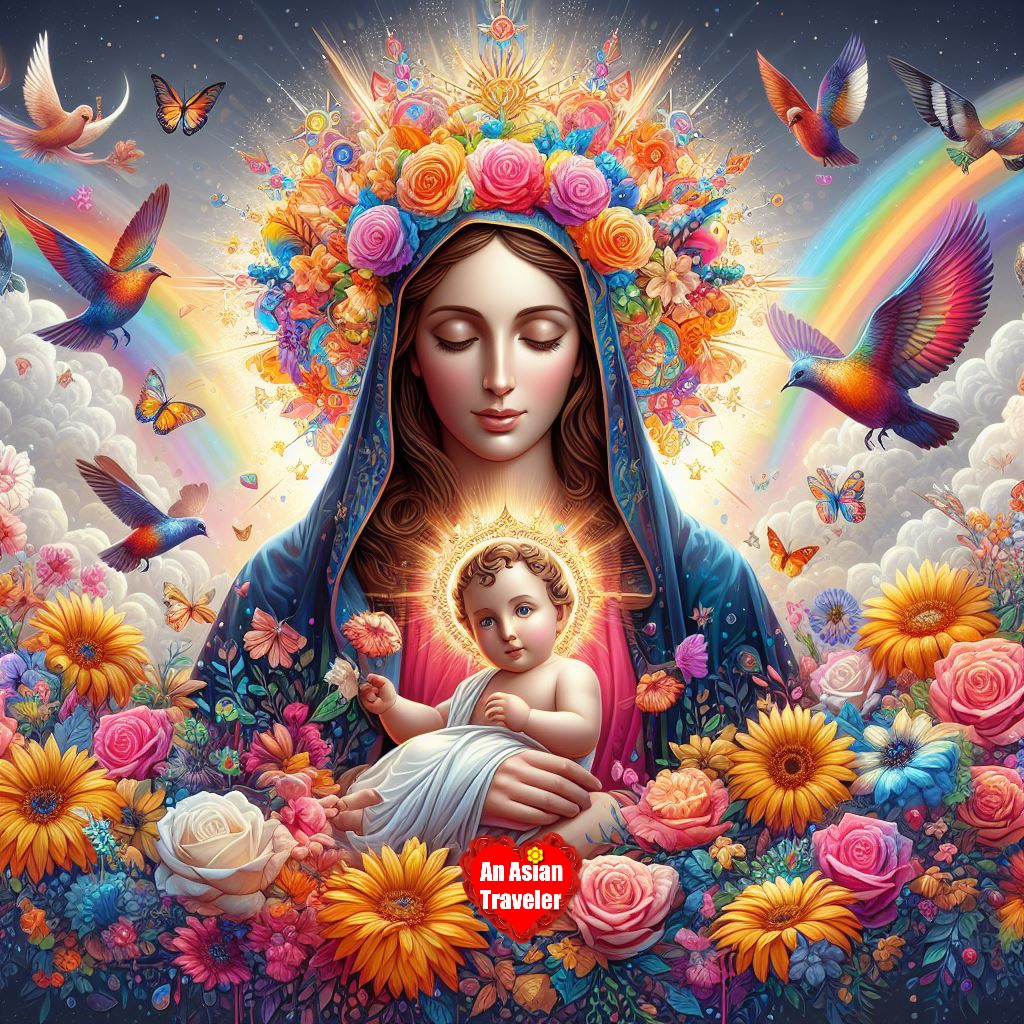As the crisp air of December ushers in the festive spirit, a particular date stands out on the Catholic calendar: December 8th marks a day of celestial celebration, a moment in time where the heavens seem to touch the...
As the crisp air of December ushers in the festive spirit, a particular date stands out on the Catholic calendar: December 8th marks a day of celestial celebration, a moment in time where the heavens seem to touch the earth with a whisper of divine grace. This is the Solemnity of the Immaculate Conception, a feast that honors not the birth, but the conception of Mary, the Mother of Jesus, free from original sin. It's a concept that has fascinated theologians, inspired artists, and brought comfort to millions. But what is the story behind this feast, and why does it captivate so many?
To understand the feast, we must first unravel the theological threads that compose its rich tapestry. The doctrine of the Immaculate Conception, declared infallibly by Pope Pius IX in 1854, asserts that Mary was conceived without the stain of original sin that all humans inherit through the fall of Adam and Eve. This singular privilege was granted by God, preparing her to be the Ark of the New Covenant, the pure vessel that would carry Jesus Christ.
But why, you might wonder, is this feast celebrated during Advent, a season earmarked for preparing our hearts for the birth of Jesus? The answer lies in the tapestry of salvation history. Just as Advent anticipates the coming of Christ into the world, the Immaculate Conception anticipates the coming of the one who would bring forth the Savior. It's a prelude to the divine symphony of redemption.
The story begins with Mary's parents, St. Anne and St. Joachim, who, according to tradition, longed for a child and were blessed with Mary after earnest prayer. Their faith and devotion set the stage for what was to be a turning point in the divine narrative. Mary's conception, untouched by sin, prepared her for her role as the Theotokos, the God-bearer.
But let's delve deeper into history. The roots of this celebration stretch back to the early Christian church, with the Eastern Church venerating Mary as the "All-Holy" (Panagia) and celebrating her birth. By the 7th century, the feast of her Nativity was established, and over time, the Western Church began to emphasize her sinless conception, a belief that was widely accepted by the faithful long before it became dogma.
A Tapestry of Traditions
Around the world, the Immaculate Conception sparks a mosaic of cultural festivities. In the United States, it's a holy day of obligation, where the faithful attend Mass and reflect on Mary's purity of heart. In many Spanish-speaking countries, it's known as "Día de la Inmaculada Concepción" and is marked with processions and festivities. In Italy, the day is marked with the lighting of bonfires and the singing of traditional hymns, while in Nicaragua, the feast is celebrated with the "Gritería," a jubilant shout of "¿Quién causa tanta alegría?" ("Who causes so much joy?") to which the response is "¡La Concepción de María!" ("The Conception of Mary!").
In the Philippines, a predominantly Catholic country, the Feast of the Immaculate Conception is observed with great reverence and enthusiasm. It is a public holiday, allowing the faithful to fully participate in the day's events. The celebration is characterized by a series of religious activities, including Masses, processions, and sometimes novenas leading up to the feast day. And in Panama, the festival of the Immaculate Conception coincides with the "Fiestas Patrias," a time of national pride and thanksgiving.
These customs and traditions not only provide a spiritual experience for the faithful but also contribute to the cultural diversity and richness that define the global Catholic community.
The Significance
But the feast is more than just a day of obligation or cultural celebration; it's a day of reflection on the virtue of purity. Mary's immaculate nature is a reminder of the transformative power of grace. It's an invitation to all to seek a life of holiness, to be open to the workings of grace in our own lives, and to prepare our hearts, just as Mary did, for the coming of Christ.
Embracing the Immaculate
As we light our Advent candles and set our sights on the joyous birth of Jesus, let us also remember the silent, holy inception of the woman who made it all possible. The Feast of the Immaculate Conception is a testament to the beauty of God's plan, a celebration of a mother chosen to bear the Light of the World, and a day for us to ponder the marvels of grace in our journey of faith.
So, on December 8th, whether one is kneeling in the hushed reverence of a candlelit church or simply pausing in a moment of quiet contemplation, the Solemnity of the Immaculate Conception stands as a beacon of purity, a testament to the power of divine providence, and a celebration of the fullness of grace that can dwell within the human heart. It's not just a day on the calendar; it's a spiritual journey that begins with a single, Immaculate Conception.
Happy Feast of the Immaculate Conception to all!??














